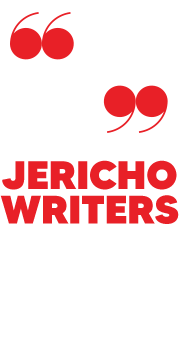The relationship between an engaging protagonist and a compelling antagonist against the backdrop of an intriguing plot is what ensures a reader will continue to turn the page. But should your protagonist be an anti-hero – an underdog who goes against the grain of the typical ‘hero‘? And what about the antagonist in the story – the character who will stop your protagonist from getting what they want? Is your antagonist somebody morally ambiguous, like an anti-villain? Or are they purely a villain, through and through?
In this guide, we’ll look at these two character types, what they are, how they differ and how to use them in your writing to strengthen your stories and engage your readers.
What Is An Anti-Hero?
The definition of an anti-hero is somebody who lacks the virtues and traits of a traditional hero, such as courage and confidence. They can be morally ambiguous in their thinking and actions. However, when it comes to the anti-hero, the audience is rooting for them anyway. That’s because they do the right thing, but maybe not for the right reasons. They have good intentions, but how they arrive at their conclusion or results can be questionable.
An anti-hero typically lacks some of the attributes conventionally associated with traditional heroes. There are several anti-heroes in books, films and TV. Tony Montana in Scarface is an iconic character who ticks all the boxes of a classic anti-hero. Initially, he’s the good guy, but he develops less than heroic traits throughout the film, as crime and drugs see him descend into a whirlwind of violence and greed. Despite this, he’s still a character the audience can get behind because he does immoral things for moral reasons (his motivation is strong: getting his family out of poverty). Still, his life of crime escalates his downfall.
Al Pacino’s portrayal of Michael Corleone in The Godfather is another excellent example of an anti-hero. The film is widely regarded as one of cinema’s greatest masterpieces, thanks to the protagonist’s gripping character arc and his journey through the world of organised crime. It’s a superb example of how the “bad guy” can be the hero.
Types Of Anti-Heroes
One of the most important aspects to bear in mind when writing an anti-hero is that they’re typically flawed but are usually engaged in doing good. So, now that we’ve looked at what an anti-hero is and some examples of famous anti-heroes, let’s explore the traits and characteristics that make up the different types of anti-heroes.
The Corrupt Protagonist
Example of the corrupt protagonist: Thomas Shelby, Peaky Blinders.
A corrupt protagonist will typically act out of self-interest and might be obsessed with motivations such as power, wealth and fame. For the reader to understand and sympathise with this type of anti-hero, the reasons for their corruption must be clear and logical. Another example is Walter White in Breaking Bad. He’s a normal guy with a normal life at the start of the series – but his obsession with money and power, instigated by his cancer diagnosis, leads to his downward spiral.
The Classical Anti-Hero
Example of the classical anti-hero: Frodo Baggins, Lord of The Rings.
A traditional hero is confident and intelligent, with few flaws and weaknesses. Therefore, the classical anti-hero is the opposite and is plagued by self-doubt and a lack of confidence. Readers enjoy the complexity that comes with a layered character who is flawed and conflicted. Traditionally, the story arc will follow the classical anti-hero conquering their fears and coming to terms with themselves and their faults to fight and conquer whatever is threatening them.
The Pragmatic Anti-Hero
Example of the pragmatic anti-hero: Harry Potter.
This type of anti-hero recognises their role in the greater good, and they see everything through a ‘big picture’ viewpoint. For example, suppose the story means this pragmatic anti-hero must kill or sacrifice other characters. In that case, typically, this anti-hero will recognise that it must be done so that they can achieve the higher goal. For example, in Harry Potter’s pursuit of Voldemort, he carries out actions that would be considered wrong (such as using curses) to ensure Voldemort’s ultimate demise that’s for the greater good.
The Unscrupulous Hero
Example of the unscrupulous hero: Jack Sparrow, Pirates of the Caribbean.
Heroes in this category have good intentions, and they’re morally good. However, they don’t care how much collateral damage they cause when they fight to achieve their goals. If your hero is unscrupulous, they’ll be motivated by revenge and will typically be distrusting. Jack Sparrow is a great example of this as he’s ultimately fighting on the good side.
Hero In Name Only
Example of a hero in name only: Dexter Morgan, Dexter.
These protagonists tiptoe along the line of a hero and a villain. The reader will still be on their side and root for them, but they won’t necessarily agree with all their actions and decisions. These characters are on the side of good, but they’re not entirely good themselves.

What Is A Villain?
The best definition of a villain is simple: a villain is a character opposite of a hero. A villain’s role in a story is vital, and every villain must be compelling enough to be believable while holding a reader’s interest. A villain is an antagonist who will place obstacles in the protagonist’s way and drive forward the story. Creating a great villain is just as important as creating a great hero – and the best villains help define and drive the character arc of the story’s hero. Writing a good villain means examining different villain ideas and villain traits to see which type of character fits into your story.
What Makes A Great Villain?
There are some key characteristics that you can use to create a villain. Arguably, the most important is the backstory. Without it, villains feel one-dimensional and inauthentic. With it, you can create a sympathetic villain that feels real – which is exactly what you want. A villain’s background will ultimately explain their motivations and help a reader sympathise with them. It will demonstrate why they act the way they do due to past experiences and situations that they’ve been exposed to. Even better, if a villain backstory is connected to the hero, the story and character arcs are even more compelling for readers.
The perfect example of this, and the relationship between a hero you’re rooting for and an engaging villain, is Harry Potter and Lord Voldemort. They’re connected through a shared backstory when Voldemort murdered Harry’s parents. But they’re also physically connected; Harry’s scar on his forehead serves to remind both the characters (and the readers) about their connection throughout the story.
But how to write a good villain? It’s important to remember that a great villain character design should include some likeable qualities. They can’t be bad through and through because a reader needs to understand them and even empathise with them to an extent. Typical characteristics of a villain include them being intelligent, capable, persuasive, proud and deceitful. They might occasionally reveal aspects of their personality that are good and perhaps even kind, but creating a villain ultimately means creating a ruthless character at their core.
Anti-Hero Vs Villain
To distinguish between an anti-hero and a villain, there are certain elements to look at. The first is motive. Villains are typically motivated by something dark and even evil. Their ultimate motivations are not sympathetic as they will usually involve the protagonist’s demise (even though a villain’s backstory might encourage empathy from a reader). However, an anti-hero’s motivations are sympathetic. A reader might not agree with why they’re doing what they’re doing, but they will understand and sympathise with their reasons why – for example, revenge and vengeance.
The second characteristic is big picture balance. What would the world look like if the anti-hero won? And what would it look like if the villain won? The hero will ultimately restore balance and normality, with good prevailing. In contrast, the villain’s victory would see the complete opposite.
It’s understandable that the lines might blur, as both types of character can be morally ambiguous. But you can readdress the balance by keeping in mind who the audience will naturally sympathise with – the anti-hero who’s the underdog with redeeming qualities, rather than the villain who may encourage a little sympathy but ultimately reveals themselves to be purely acting in their own interests or against the protagonist. A typical character arc of the anti-hero is that they grow into becoming a better person, but a villain will go in the opposite way.
What Is An Anti-Villain?
While we’ve explored anti-heroes and villains and how they’re connected, it’s worthwhile looking at another type of character: anti-villain. An anti-villain is somebody who isn’t completely evil (unlike a typical villain). They’re much more complex, and their actions don’t necessarily have to be particularly wicked.
Types Of Anti-Villains
Now that we’ve looked at what an anti-villain is, let’s explore the traits and characteristics that make up the different types of anti-villains.
The Sympathetic Anti-Villain
Example of the sympathetic anti-villain: Benjamin Barker, Sweeney Todd.
The sympathetic anti-villain is a character that the readers feel sorry for, and if some of their actions weren’t so villainous, the readers might even root for them. The character’s backstory is key here, as it must garner sympathy from the reader and tug on the heartstrings. It must reveal that the anti-villain is acting the way they do due to past circumstances outside of their control and because they don’t see any other options open to them.
The Well-Meaning Anti-Villain
Example of the well-meaning anti-villain: Inspector Javert, Les Miserables.
The reader can see that this character’s heart is in the right place, but they take things a step too far in pursuit of their goal. They are driven by what they deem is the “greater good” and will stop at nothing to reach their goals, making them ruthless and morally questionable. Ultimately, the character is making the situation worse, but they might not even be aware of it because they’re too focused on what they think is right and wrong – thinking purely in black and white, with no room for a grey area.
The Situational Anti-Villain
Example of the situational anti-villain: Carrie White, in Stephen King’s Carrie.
This character might find themselves in a set of circumstances that set them against the protagonist. Or against themselves if they are the protagonist. For example, they might have started as a good person, but they’ve come up against something that has pushed them to the brink of their limits, and now they’re out for revenge. Or they might be simply in the wrong place at the wrong time. The reader will understand that their acts and motivations could be justified, but they won’t get away with it.
Choosing Between Your Anti-Hero And Your Villain
There are some great characteristics and traits that can create compelling anti-heroes, villains, and anti-villains. Ultimately, the anti-hero does the right thing, but not necessarily for the right reasons. Whereas the anti-villain does the wrong thing, but their reasons are often understandable. And the villain is there to make life hard for your protagonist every step of the way. By incorporating these strong character types, you’re making the story even more interesting for the reader.
For more writing support visit our blog or join Jericho Writers – the world’s leading writing community. With our membership you get access to resources including 100+ hours of video content and masterclasses, live online events with top authors, one to one with agents and publishers, as well as editorial and mentoring support.
Jericho Writers is a global membership group for writers, providing everything you need to get published. Keep up with our news, membership offers, and updates by signing up to our newsletter. For more writing articles, take a look at our blog page.











